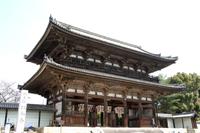Scholar-led Small-Group Kyoto Walking Tour: Japanese Gardens and Landscape
Kyoto, Japan
Rating: 









Trip Type: Walking Tours
Duration: 3 hours
Garden and landscape design is an art form that has shaped Japanese aesthetics for centuries. On this 3-hour scholar-led walking tour of Kyoto, you’ll see a wide variety of Japanese garden styles, from the intricate miniature landscapes of emperors to the stylized gravel and rock designs of Zen Buddhist temples. Visit Mirror Pond at Kinkaku-ji (the Golden Pavilion), Karesansui Garden at Ryoan-ji and the landscapes of Ninna-ji as you discuss each design. Numbers are limited to 6 people, ensuring an intimate experience with a small group.
More About This Activity All Walking Tours →
Garden and landscape design is an art form that has shaped Japanese aesthetics for centuries. On this 3-hour scholar-led walking tour of Kyoto, you’ll see a wide variety of Japanese garden styles, from the intricate miniature landscapes of emperors to the stylized gravel and rock designs of Zen Buddhist temples. Visit Mirror Pond at Kinkaku-ji (the Golden Pavilion), Karesansui Garden at Ryoan-ji and the landscapes of Ninna-ji as you discuss each design. Numbers are limited to 6 people, ensuring an intimate experience with a small group.
In the morning or afternoon, meet your small group at the Golden Pavilion, also called Kinkaku-ji, located in the northwest corner of Kyoto. Throughout your 3-hour walking tour a scholarly guide will focus on Japanese garden design during the Muromachi period, an era when Japanese culture — including the development of Zen Buddhism — flourished. With its high ratio of well-preserved temples, Kyoto is a perfect environment for exploring the landscapes that have become a staple of Japan since the time of emperors and nobles.
Starting at the Zen Buddhist temple, which was a former private villa during the 13th and 14th centuries, learn how Shogun Ashikaga Yoshimitsu purchased and transformed the land. Visit the lush gardens as your guide delves into villa garden design from approximately 1337 to 1573. Mirror Pond, which reflects the pavilion and contains numerous man-made islands, is a prime example of the use of water and stone in the environment. While here, discuss the various natural elements used to create the gardens, and contemplate how these spaces were used for both entertainment and contemplation as the space transformed from private villa to Buddhist temple.
After a short trip on the local bus (own expense), arrive at two excellent examples of Zen rock gardens: Karesansui Garden at Ryoan-ji and the gardens of Ninna-ji. The dry Zen gardens at Ryoan-ji showcase a stylized landscape created from gravel and rocks. Karesansui Garden from the Muromachi period exemplifies the typical design found at Zen Buddhist temples. You’ll learn to read the landscape as your expert guide points out how form and function are bound tightly together with the philosophy behind Zen Buddhism.
Ninna-ji, your final stop, dates from the Heian period, providing a means to compare Japan’s earlier landscape design. The covered walkways of the Goten, the former residence of the head priest, were modeled on an Imperial style and feature painted sliding doors that mirror the surrounding landscape. Ninna-ji contains both dry gardens and gardens with water features, tying together the Japanese principles of precision and idealization you’ve come to appreciate during your small-group walking tour.
« Go Back

